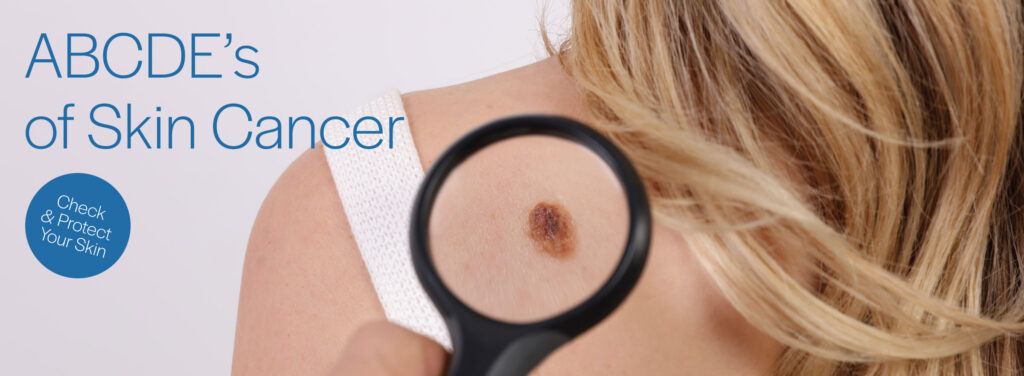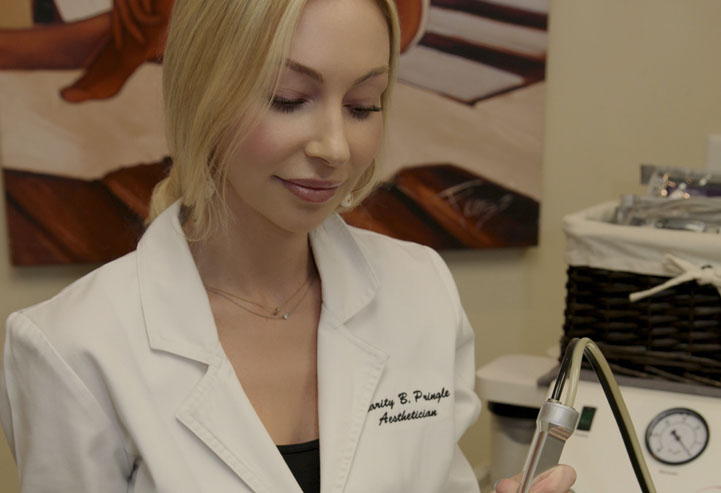ABCDE’s of Skin Cancer

Just as you learned the ABCs in school to help you read and write, the ABCDEs of melanoma can help you identify possible skin cancer. These simple rules are easy to remember and could save your life. A is for Asymmetry. B is for Border. C is for Color. D is for Diameter, and E is for Evolving. Familiarity with this list will go a long way to help you detect cancer early, so let’s look at each of these categories.
A is for Asymmetry
Our skin is made up of cells (melanocytes) that produce melanin, the pigment that gives our skin its color. Melanin also helps to protect our skin from the harmful effects of ultraviolet (UV) radiation from the sun. However, when melanocytes become damaged, they can begin to grow out of control. This can lead to the development of a type of skin cancer called melanoma.
One way to check for signs of melanoma is to look for asymmetry. Normally, a spot on our skin is symmetrical, meaning that if you were to divide it in half, the two halves would look the same. However, with melanoma, one half may look different than the other. This can be a sign that the cancerous cells are growing out of control. While asymmetry is just one sign of melanoma, it’s an important one to be aware of.
B is for Border
When it comes to melanoma, B is for Border. That’s because changes in the color of a mole or spot can be a sign of melanoma. One important thing you can do to check for skin cancer is to look for changes in the border of a mole or spot. Healthy moles and spots have well-defined borders, while moles with cancerous cells tend to have blurry or jagged edges.
C is for Color
Most of us have several moles and spots on our skin. While they’re usually nothing to worry about, it’s essential to keep an eye on them in case they start to change color because this can be an early warning sign of skin cancer.
If you’re not sure how to check your moles and spots properly, don’t worry – it’s easy if you use a mirror. First, use a full-length mirror to examine your body from head to toe. Next, use a hand mirror to look at any spots you’re concerned about. Check for changes in color – look for anything that is darker or lighter than the surrounding skin. Also, look for spots that contain multiple colors. These can be anything from red, white, and blue to tan, brown or black.
D is for Diameter
Melanoma spots are typically large and greater than 6mm in diameter. So, if you see a spot on your skin that is larger than a pencil eraser, it’s worth getting it checked out by a dermatologist.
E is for Evolving When it comes to checking for melanoma, it’s vital to be proactive. Be sure to keep an eye out for spots that are evolving. This means they are growing or changing rapidly or look different from other spots near them. Do you notice any changes in the shape, color, or size of a spot? If so, be sure to have it professionally checked.
Look for spots everywhere, including between your toes.
Melanoma can occur anywhere on your body. This includes places that don’t get a lot of sun exposure. So, it’s important to check for spots between your toes and on the soles of your feet. What to do if you notice a suspicious spot on your skin
If you notice a suspicious spot on your skin, it’s important to see a dermatologist as soon as possible. That’s because spotting cancer early makes it easier to treat. Dermatologists are specially trained to diagnose and treat skin conditions, so they are the best medical professionals to consult if you have any concerns about your skin.





